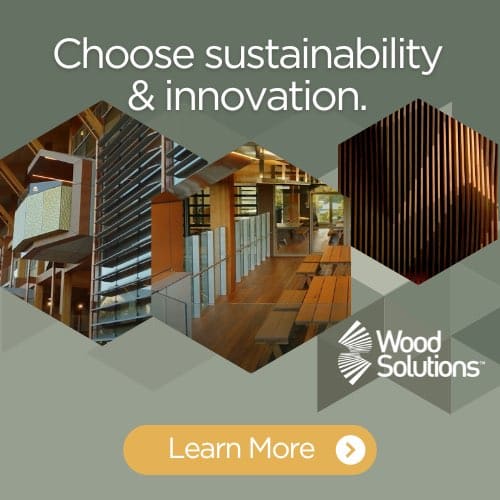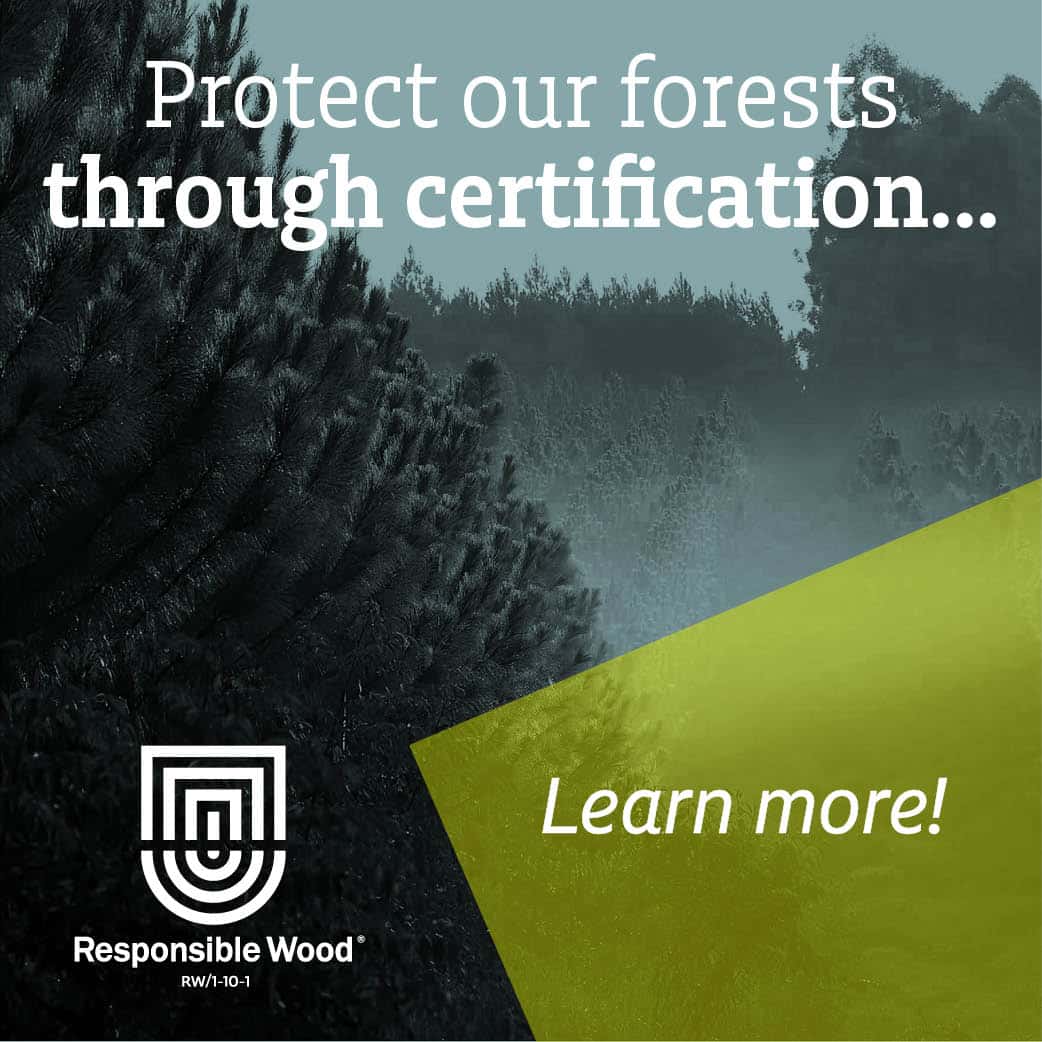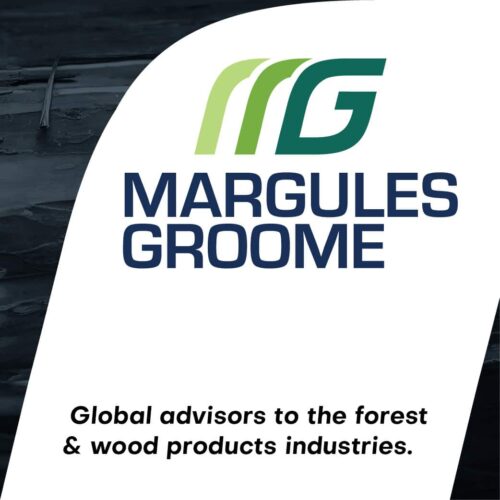We were backstage with Kevin Ezard and Andrew Dunn before they raised the curtain on the Timber Offsite Construction Conference and Exhibition at the Crown Promenade in Melbourne on Monday.
No theatrics here. Just two professional performers fronting the greatest assembly of global timber engineering experts and climate-alert designers … “ever,” remarked Andrew, adding:
“When the event first started 10 years ago – then FRAME Australia – it was the timber industry talking to the timber industry. Now design professionals and structural engineers are a fixture in the conversation.”
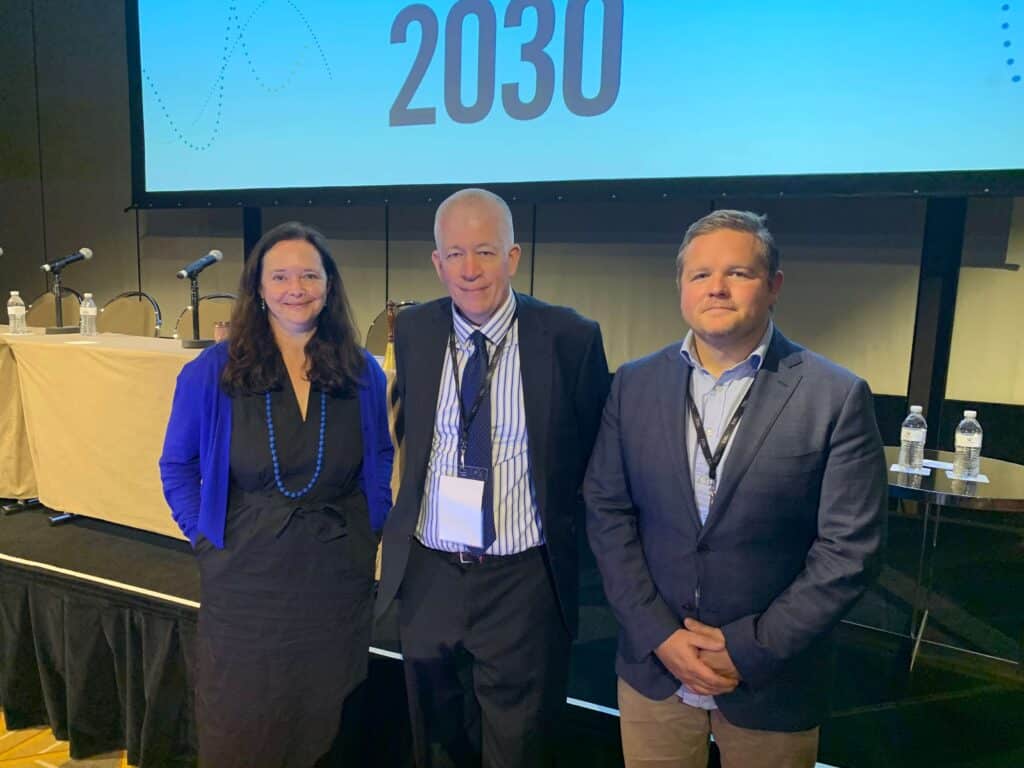
Kevin Ezard, the founder of the event 23 years ago, has passed the mantle to the Timber Development Association, and CEO Andrew Dunn is running with the theme ‘Timber & Technology: A Zero Carbon Future’ alongside more than 200 delegates and 32 speakers from across Australia and from New Zealand, the US, Canada, Sweden and Estonia.

Kevin Ezard is happy to step back for a while. He’s been in the wood sector for almost half a century, starting work at the family farm in the Gippsland, where they operated an ash hardwood sawmilling business.
He moved into serious marketing of timber in the 1970s, promoting Ezard F17 beams before moving into nail-plated products to achieve much larger sections.

“For me, the transition from where we were, say, 20 years ago, has been nothing but dramatic,” Kevin enthused.
“Discussion then was mostly around timber framing, prefabrication and wall panels, which are still components of the conference this year. But about 12 years ago, the horizon suddenly shifted to mass timber.

And it was sudden. We welcomed globally respected architects of the calibre of Andrew Waugh, who talked about CLT, modular housing and prefab in a fast-changing world.
“This was the trigger for a new dimension, a turning point, from an audience of fabricators to mass timber enthusiasts that includes developers, designers and engineering in a remarkable transition.
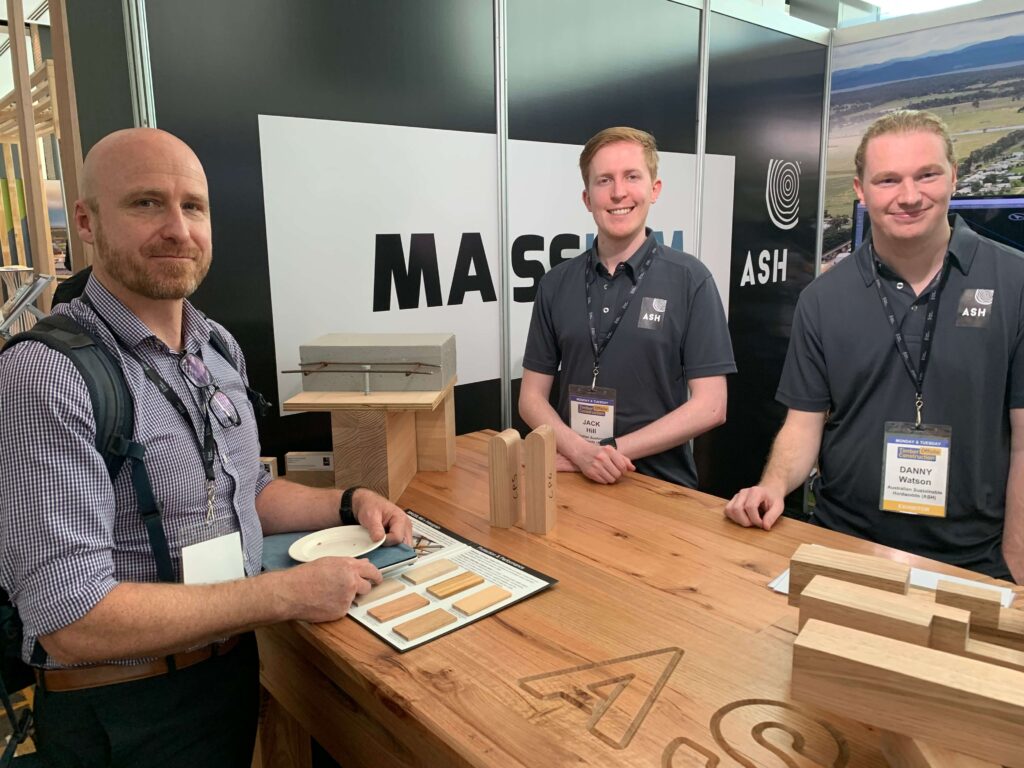
“The volume of mass wood globally has increased dramatically as the resource and availability of short-length timber pieces are gobbled up by amazing multi-storey creations that bring with them environmental advantages.
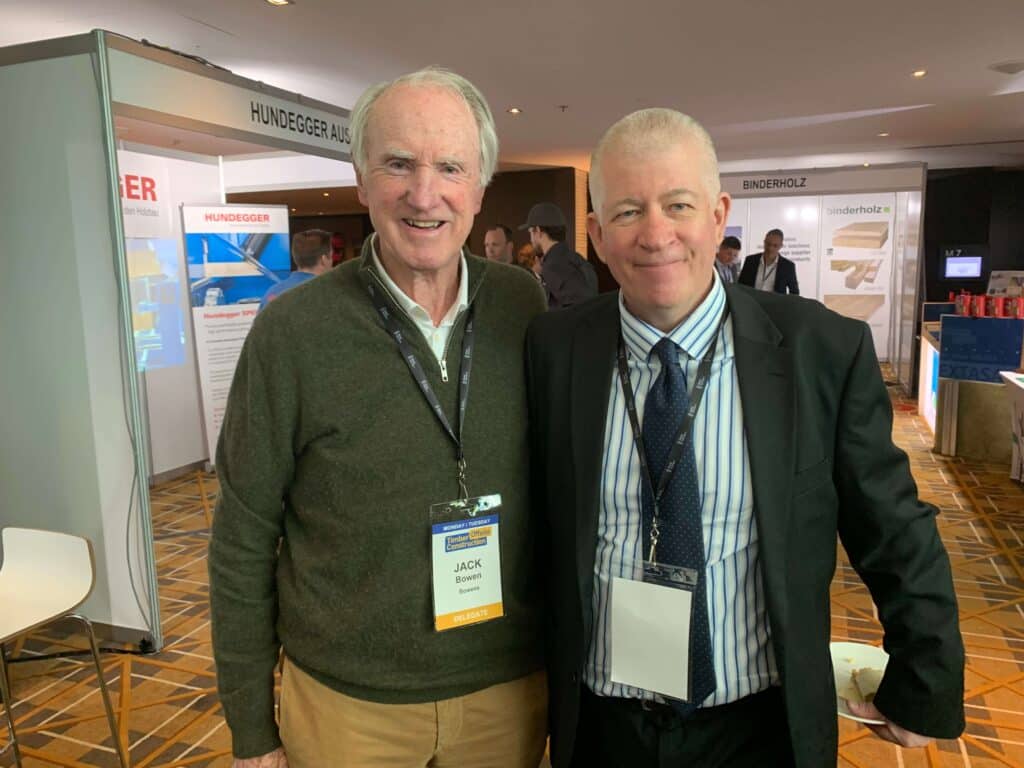
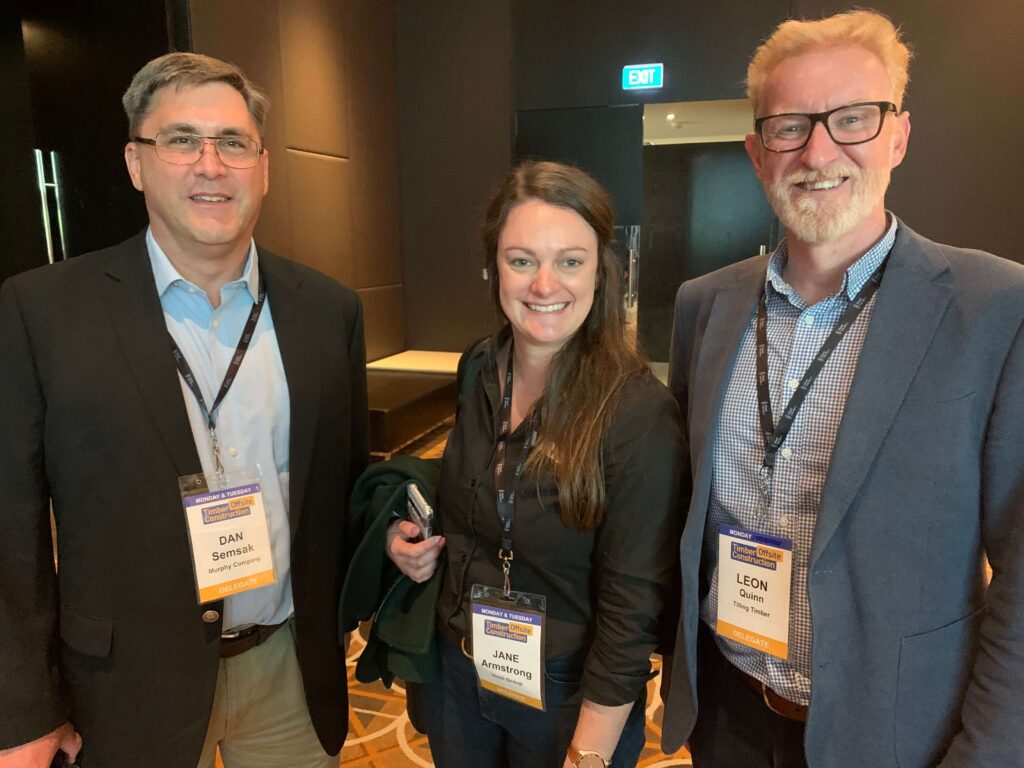

“In Australia, we are well down the scale as far as mass timber production is concerned. But it’s the way, the method, and the speed in which it is being embraced and adapted that’s exciting … going from a step-by-step process where construction began with the architect, then the designer, then the engineer, and then the quantity surveyor.”

“Now they’re all involved, together, in the total installation, a team glued together as one before a single sod of soil is turned on a building project.”
“That’s a totally different scale of activity; it’s brought a lot of change and fun.”
Appropriately, Kevin opened the conference, as he has for 23 years, and chose to moderate Tuesday’s session on iconic buildings and global trends.
“Two projects captured my interest – the Murdoch University’s Boola Katitjins project in Perth and the incredible 15-storey mass timber Wellington building in Melbourne,” he said.



The Perth project is the first large-scale timber building in Western Australia, using 1796 pieces of mass timber across the structural system. Boola Katitjin has attracted global attention for its sustainable, renewable, and circular contribution to net zero carbon goals in construction.
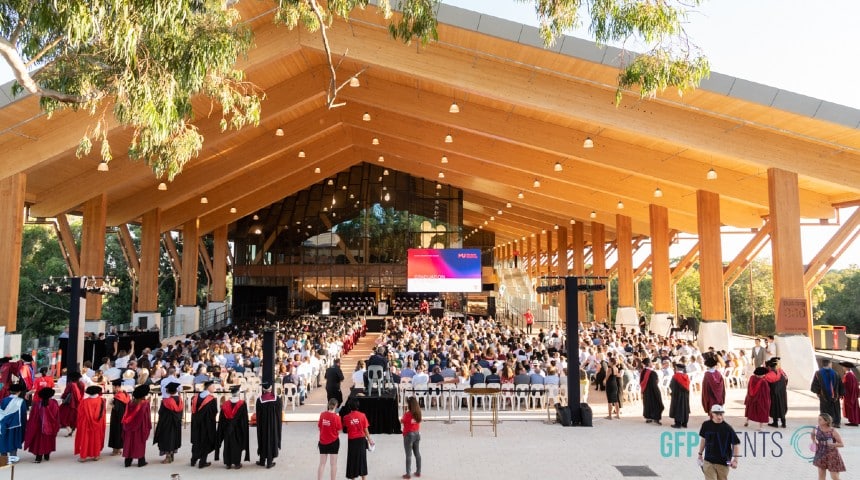
Hines, one of the largest real estate investment and development managers in the world, is finishing construction of Melbourne’s tallest mass-engineered timber office building, the Wellington, just 2 km from the conference venue with 18,200 sq m of net leasable space across 15 floors.

Managing director Simon Nasa said the project was designed to achieve 5 Star NABERS and 5.5 Star Green Star ratings as a minimum.
• Wood Central is the only media company providing live updates exclusively from the conference!




